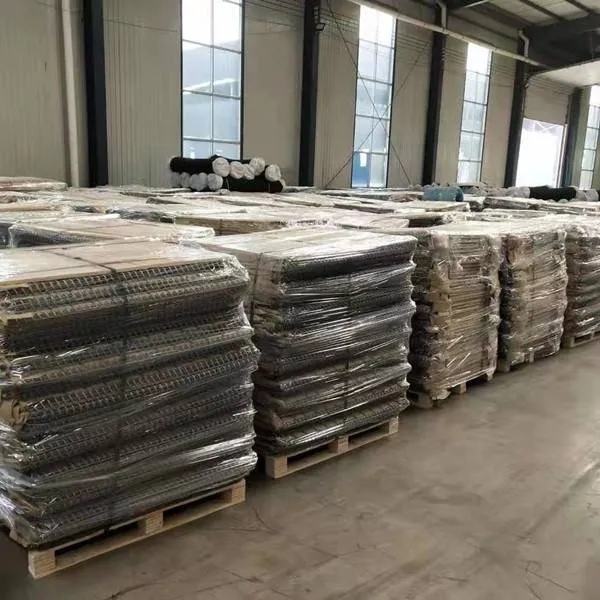
Nov . 27, 2024 08:56 Back to list
Innovative Steel Mesh Solutions for Effective Retaining Wall Construction and Design
Steel Mesh Retaining Walls A Modern Solution for Earth Retention
In the realm of civil engineering and construction, retaining walls play a crucial role in managing soil erosion and supporting vertical or near-vertical slopes. Among the diverse types of retaining walls available, steel mesh retaining walls have emerged as an innovative and effective solution for various applications. This article explores the advantages, construction methods, and applications of steel mesh retaining walls, highlighting their relevance in contemporary engineering.
What are Steel Mesh Retaining Walls?
Steel mesh retaining walls are structures made from high-strength steel wire mesh that is used to retain soil, gravel, or other materials. The mesh is typically reinforced with steel rods and can be filled with a variety of materials, including soil, rocks, or concrete. The design of these walls allows for flexibility, making them suitable for different types of terrain and environmental conditions.
Advantages of Steel Mesh Retaining Walls
1. Durability Steel mesh is known for its strength and resilience. Unlike traditional materials such as timber, steel does not rot or degrade over time, ensuring a longer lifespan for the retaining wall. This durability results in lower maintenance costs and reduced need for replacements.
2. Cost-Effectiveness Steel mesh retaining walls can be more cost-effective than conventional walls. The materials and labor involved in constructing these walls can result in lower overall expenses, particularly in large-scale projects.
3. Aesthetic Flexibility The versatility of steel mesh allows for various design options, making it possible to create visually appealing retaining walls. They can be seamlessly integrated into landscapes, enhancing the overall aesthetics of gardens, parks, and urban settings.
4. Ease of Installation The lightweight nature of steel mesh makes it easier to transport and install compared to traditional concrete or masonry walls. This feature significantly reduces the time required for construction, leading to quicker project completion.
5. Environmental Sustainability Steel mesh retaining walls can promote better drainage and reduce water retention behind the wall, mitigating the risk of erosion and improving the surrounding ecosystem's health. Additionally, many steel products are recyclable, contributing to sustainable construction practices.
Construction Methods
steel mesh retaining wall

Constructing a steel mesh retaining wall involves several steps that ensure stability and durability. First, proper site assessment and planning are crucial for determining soil conditions, slope angles, and potential drainage issues. The wall's design must accommodate these factors.
Once planning is complete, excavation is necessary to create a stable foundation. Steel mesh panels are then anchored into place, often using concrete footings or other supportive structures. The mesh can be filled with suitable materials to provide additional weight and stability, contouring the wall to the natural landscape.
Drainage systems, such as weep holes or drainage pipes, are integrated into the design to prevent water accumulation behind the wall, which can lead to soil destabilization. Finally, the wall is finished with landscaping or protective layers to enhance its visual appeal and environmental compatibility.
Applications of Steel Mesh Retaining Walls
Steel mesh retaining walls are versatile and applicable in various scenarios. They are widely used in
- Residential Landscaping Homeowners utilize these walls to create gardens on sloped terrains, allowing for terraced landscapes that are both functional and aesthetically pleasing.
- Transportation Projects In road and highway construction, steel mesh retaining walls support embankments, preventing soil erosion that can obstruct traffic.
- Erosion Control In areas prone to erosion, these walls serve as a preventive measure against landslides and soil loss, protecting both natural habitats and human structures.
- Commercial Developments Businesses invest in steel mesh retaining walls for site development, enhancing the usability of uneven land while maintaining safety standards.
Conclusion
Steel mesh retaining walls represent a modern engineering solution that combines durability, cost-effectiveness, and aesthetic appeal. As we continue to seek sustainable practices in construction and urban planning, these walls prove invaluable for managing soil and enhancing landscapes. By understanding their advantages and applications, engineers and developers can make informed choices that lead to more resilient and attractive environments. As technology and materials evolve, the potential for steel mesh retaining walls will only expand, shaping the future of infrastructure development.
-
Why a Chain Link Fence is the Right Choice
NewsJul.09,2025
-
Upgrade Your Fencing with High-Quality Coated Chicken Wire
NewsJul.09,2025
-
The Power of Fence Post Spikes
NewsJul.09,2025
-
The Best Pet Enclosures for Every Need
NewsJul.09,2025
-
Secure Your Property with Premium Barbed Wire Solutions
NewsJul.09,2025
-
Enhance Your Construction Projects with Quality Gabion Boxes
NewsJul.09,2025
Products categories











